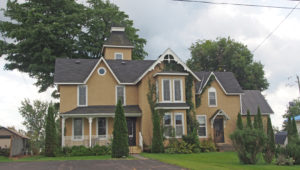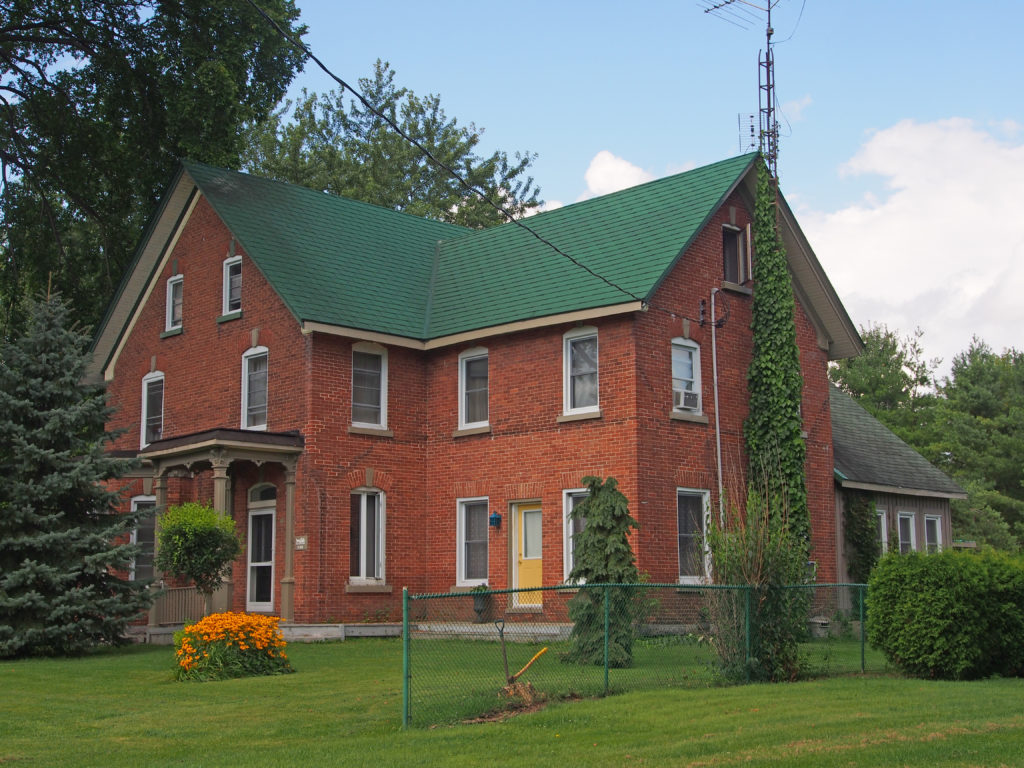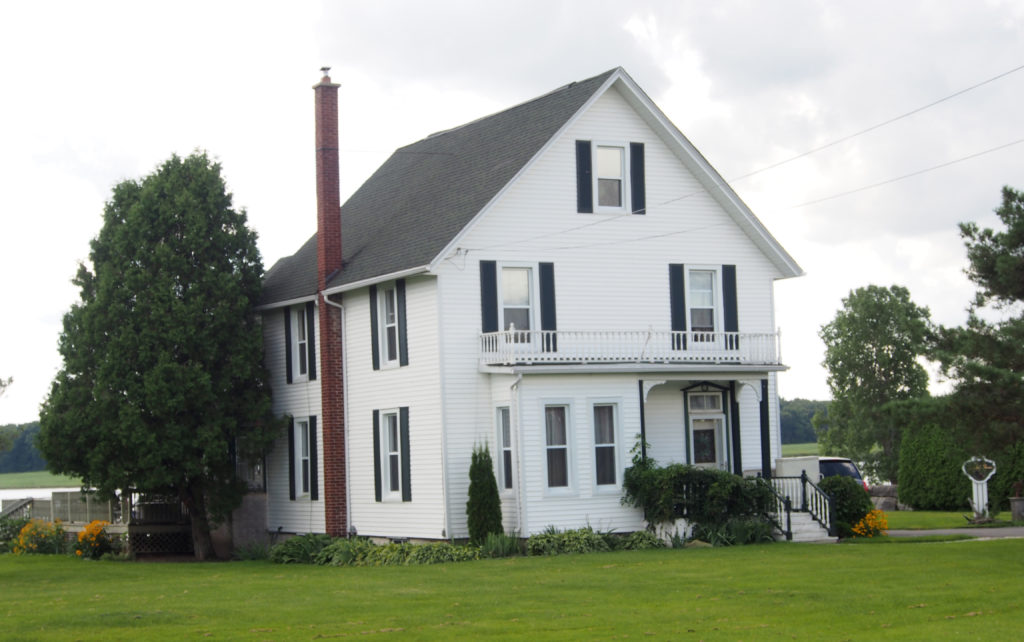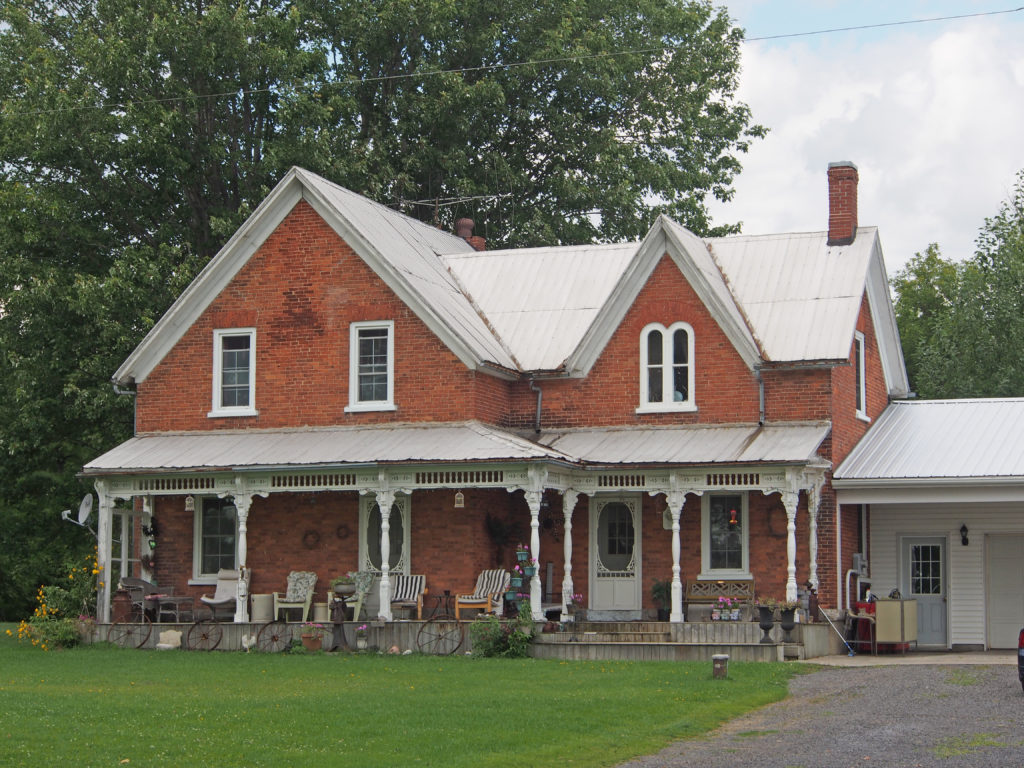Mariatown to Maitland Ontario – My Top 8 Picks
Mariatown and Iroquois
South Dundas is a municipality in eastern Ontario in the United Counties of Stormont, Dundas and Glengarry along the north shore of the St. Lawrence River. It is located about sixty miles/one hundred kilometers south of Ottawa. The township was created on January 1, 1998, by amalgamating the former townships of Matilda and Williamsburg with the villages of Iroquois and Morrisburg. (Morrisburg is big enough to be a separate book.) Mariatown is located in the township.
The McIntosh apple was discovered and cultivated in South Dundas near Williamsburg. John McIntosh moved to Upper Canada in 1796. In 1811 he acquired a farm in Dundela, and while clearing the land of second growth discovered several apple seedlings. He transplanted these, and one bore the superior fruit which became famous as the McIntosh Red apple. John’s son Allan established a nursery and promoted this new species extensively.
Morrisburg and Iroquois were partially flooded by the creation of the St. Lawrence Seaway in 1958. Unlike the Lost Villages of Cornwall and Osnabruck Townships, the two towns were relocated to higher ground in the same area.
An artificial lake, Lake Saint Lawrence, now extends from a hydroelectric dam at Cornwall to the control structure at Iroquois, and replaces the formerly narrow and turbulent section of river that was impassable to large vessels.
Cardinal
Edwardsburgh/Cardinal is a township in the United Counties of Leeds and Grenville of eastern Ontario. Edwardsburgh Township was surveyed in 1783. The Township of Edwardsburgh/Cardinal was formed on January 1, 2001, through the amalgamation of Edwardsburgh Township with the Village of Cardinal. It is a historical community with many old homes and buildings, including one-room school houses, grist mills, and churches. It is situated along the St. Lawrence River and extends back into rural hamlets. The South Nation River passes through the township. The township’s main population centers are Cardinal, Johnstown, and Spencerville.
Ten percent of the area’s water drains into the St. Lawrence, while ninety percent drains into the South Nation River. The flow of the South Nation River through this area is very sluggish with poor drainage, due to the fact there is little drop in elevation along the river; this leads to the formation of bogs and swamps, and also makes the area prone to seasonal flooding.
Up until the 18th century, the land was covered with thick, mature, mixed forests. The original forest was almost completely cleared throughout the years and the forest that stands today is mostly secondary growth over previously cleared land. The forests in the area presently contain numerous types of deciduous oak, birch, ash and maple trees. The common coniferous trees in the area include many types of pine and cedar as well as balsam fir and white spruce. In the darker, acidic soils around the bogs and swamps there are tamarack trees, as well as juniper and black spruce.
In 1673, the French, working with native tribes from the area, built a storehouse on Old Breeches River, now known as Johnstown Creek. This storehouse was used to hold supplies for upriver trading posts such as Fort Frontenac (now Kingston). In 1759, The French settlers built Fort de Levis on Chimney Island, in the St. Lawrence River just off of Johnstown, between it and Ogdensburg. The purpose of this fort was to protect the St. Lawrence River from the British. It was captured by Major-General Jeffrey Amherst in August 1760 during the Battle of the Thousand Islands. The island on which the fort once stood was permanently flooded during the construction of the St. Lawrence Seaway.
Johnstown
Before the construction of dams and later the Seaway, Johnstown was fronted by a calm section of the St. Lawrence River located between two rapids. By 1784, Loyalists were residing in the township and until 1790 the landing point and base camp for these settlers was at Johnstown.
Johnstown is part of the township of Edwardsburgh/Cardinal in the United Counties of Leeds and Grenville in eastern Ontario. It is located at the Canadian terminus of the Ogdensburg-Prescott International Bridge.
In 1792 John Graves Simcoe, the first Lieutenant Governor of Upper Canada, established himself in Johnstown which then became the district’s administrative seat. This led to the court of quarter sessions (the district’s government) alternating its meeting location between Johnstown and Cornwall, and to the construction of a courthouse and gaol. The courthouse was a log structure, which stood near the present site of the Prescott-Ogdensburg Bridge. By the late 1790s, the village was also home to a sawmill, gristmill, and an inn and tavern. Census records indicate by 1807, there were thirty-six houses and a general store. In 1808, the Seat of Justice was moved to Elizabethtown (now Brockville), as it was a more central location in the district.
New Wexford is located in Edwardsburgh/Cardinal Township, in the United Counties of Leeds and Grenville of eastern Ontario.
Prescott
Prescott is a small town located on the north shore of the Saint Lawrence River in the United Counties of Leeds and Grenville. Colonel Edward Jessup remained loyal to the British during the revolutionary war. He was granted 1,000 acres and in 1810 had building lots surveyed for the town which he named in honor of General Robert Prescott who had been Governor-in-Chief of Canada between 1797 and 1807.
Prescott was a strategic military site for the protection of the Canadian border against American and French invasions. Fort Wellington was built in 1812 to defend the St. Lawrence River and the town. Prescott is located at the head of the St. Lawrence rapids. Before the completion of the canals between here and Montreal in 1847, Prescott was the eastern terminus of Great Lakes navigation.
Established in 1810, it became a center for the forwarding, or shipping, trade and an important center in Montreal’s commercial system. One of the earliest forwarders at Prescott was Captain William Gilkison who began operations in 1811. The population of Upper Canada increased rapidly after 1820; the trade expanded and forwarding firms, including Henderson & Hooker, and Macpherson, Crane & Co., established ship building yards, wharves, and warehouses along the waterfront. The forwarding trade flourished before the building of railways and canals. The railway came in 1854.
During four days in November 1838, British troops and local militia defeated an invasion force of 300 American hunters and Canadian rebels. The Battle of the Windmill victory prevented the invasion force from capturing Fort Wellington in Prescott and cutting the St. Lawrence communications link, which would have left Upper Canada open to invasion.
By 1887, in addition to the fort, barracks, and military hospital, there were twenty-three hotels, twenty-four taverns, a distillery, two breweries, two foundries, two tanneries, two potters, a bank, a saw mill, a quarry, a brick factory, a shipyard, a grain elevator, and a farmers’ market building.
With a town of 3,000 people, smaller establishments and services were also present: a bowling alley, a theater, several newspapers, a telegraph office, bakeries, general merchants, doctors’ offices, a dentist, a library, a college, two schools, four churches, many docks and wharves with large storage buildings, and a ferry service to Ogdensburg, New York.
Maitland
Maitland is a small village in the United Counties of Leeds and Grenville. It is located along the St. Lawrence River about five kilometers east of the City of Brockville. Loyalists began to settle the area in the late 1700s and into the early 19th century by building homesteads, establishing businesses and opening small factories. During the early part of the century, Maitland was on the opposite end of a supply route running to Merrick’s Mills, which aided in its growth; the construction of the Welland Canal and other canal systems through the St. Lawrence allowed goods to be transported to and from the village. A wharf was used for collecting goods, and many mills were constructed.
One of Maitland’s most notable landmarks was constructed in 1828: the Longley Tower, which was originally built as a windmill along the St. Lawrence River. The tower had a brief life as a windmill, but it did not generate enough power to sustain anything for long; it was later converted into a distillery. Longley imported a steam engine from Europe, built a flour mill, and constructed a stone building out of which he ran a general store and post office. Major Charles Lemon constructed two mills, a foundry, and a blacksmith shop to serve the village.

Cardinal – Victorian – semi-circular spindle decoration on gable above two-storey rectangular bay windows; three-storey tower with iron cresting on top; decorative veranda support posts, open railing








